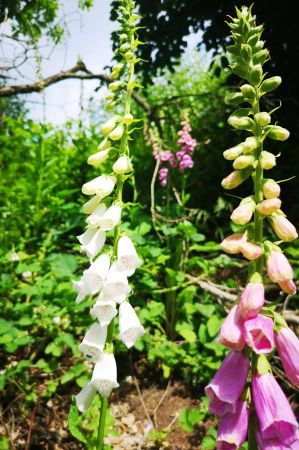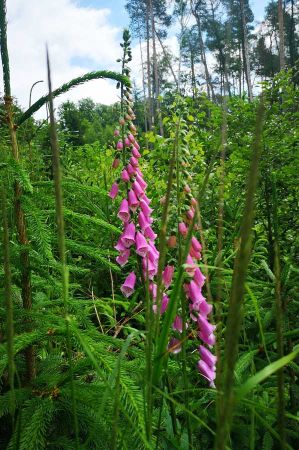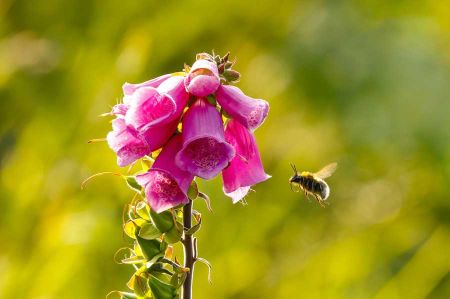Fox Glove on the Eselspfad hiking trail near Billroda
- Written by Portal Editor
Just slightly cloudy skies and not too powerfully warm sunshine had once again tempted us to hike to the forest swimming pool near Rastenberg, which we wanted to reach via the now well-signposted donkey path above Billroda.
Coming from there it was initially quite steep up the ridge, where some felled trees blocked the hiking trail. A little later we came across a roebuck, surprised as we were, who was crossing the path just a few meters in front of us. Arrived at the donkey path, which is actually just a few hundred meters long path that leads steeply down into the valley to the forest road to Rastenberg. We had already walked the path several times, as both the view from here and the flora on the path are simply impressively beautiful. Today, at the beginning of June, we came across the foxglove, which was splendidly in bloom.
Fascinatingly beautiful flowers and so poisonous: the foxglove

The different, sometimes almost endearing names for the red foxglove still lead to misunderstandings: cinquefoil, foxweed, gayweed, our dear woman's glove, forest bell are the most important terms for the red foxglove (Digitalis purpurea).
The red foxglove can be found scattered but sociable on clearcuts, especially in the mountains, on forest paths and in forest clearings. It prefers fresh, low-lime, acidic, loose, humus-rich soil in sunny to partially shaded locations.
This striking plant with its magnificent flowers was not given great importance in the Middle Ages or in ancient times. A recipe collection in Welsh from the 12th or 13th century mentions an external use of the leaves for the first time.
The thimble has long been disregarded in medicine
The English used the plant as an emetic, to promote expectoration in bronchitis and around 1700 AD even against consumption. In 1748, experiments by the Académie Française showed that after foxgloves were fed to turkeys, their hearts, livers, gall bladder and lungs had shrunk. This meant that the English also used the thimble less often.
But how can it be otherwise, because a poison can also be a cure on the other hand. The red foxglove has long been known in folk medicine as a remedy for heart failure and has even been used medicinally since the late 18th century. The active ingredients in foxglove are cardiac glycosides, which today are predominantly obtained from woolly foxgloves. Cardiac glycosides stimulate the weakened heart muscle to contract more strongly again. In the therapeutic use of Digitalis, the heart rate lowering effect of Digitalis is more and more in the foreground compared to strengthening the cardiac output.
Healing effects discovered by accident
Please also read:
Bad Bibra - Finne Kneipp cures and cycling
Hike along the Kaiserweg from Billroda to Lossa
Hike over the Finne coming from Billroda
-
-
-
-
-
-
-
-
-
https://www.alaturka.info/en/life/flora/5384-fox-glove-on-the-eselspfad-hiking-trail-near-billroda/amp#sigProIdc78b747c2b
